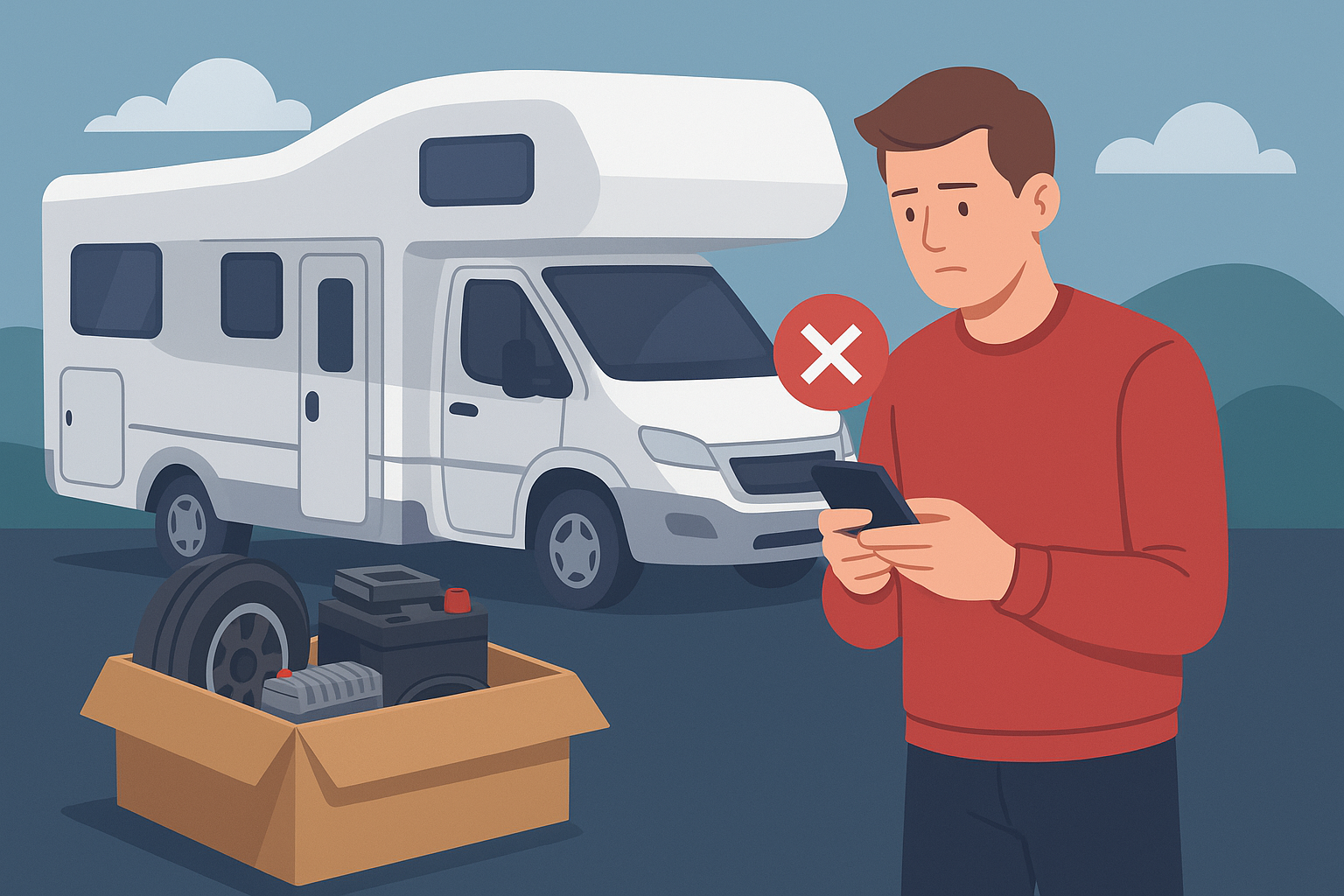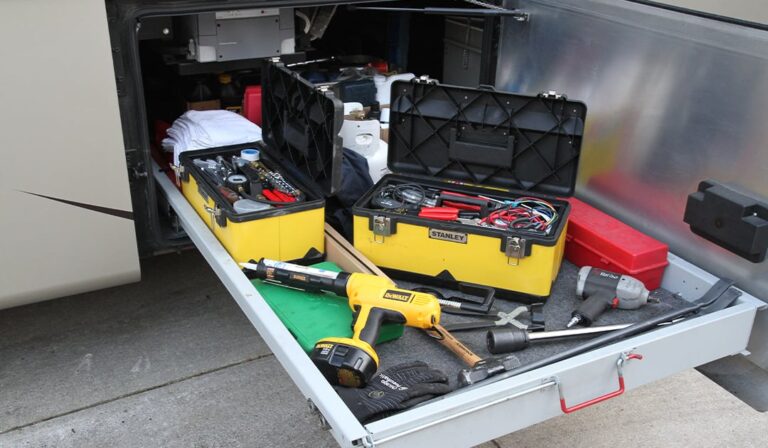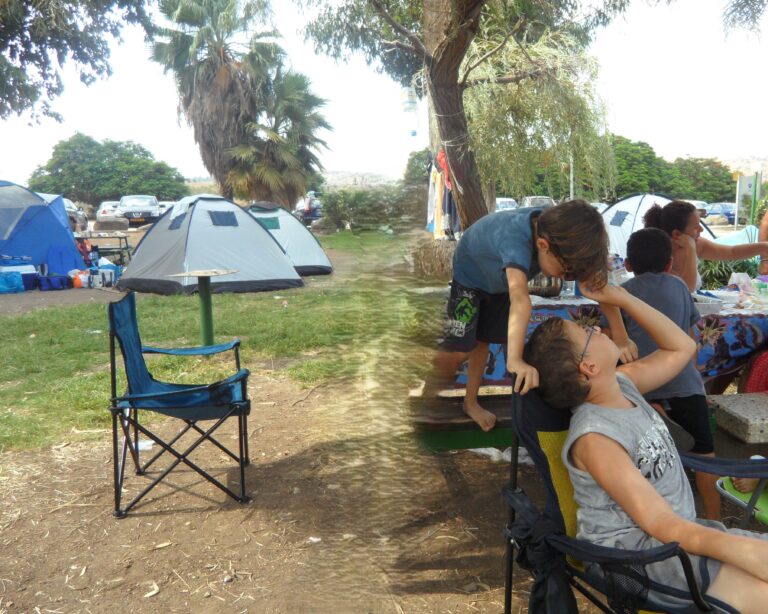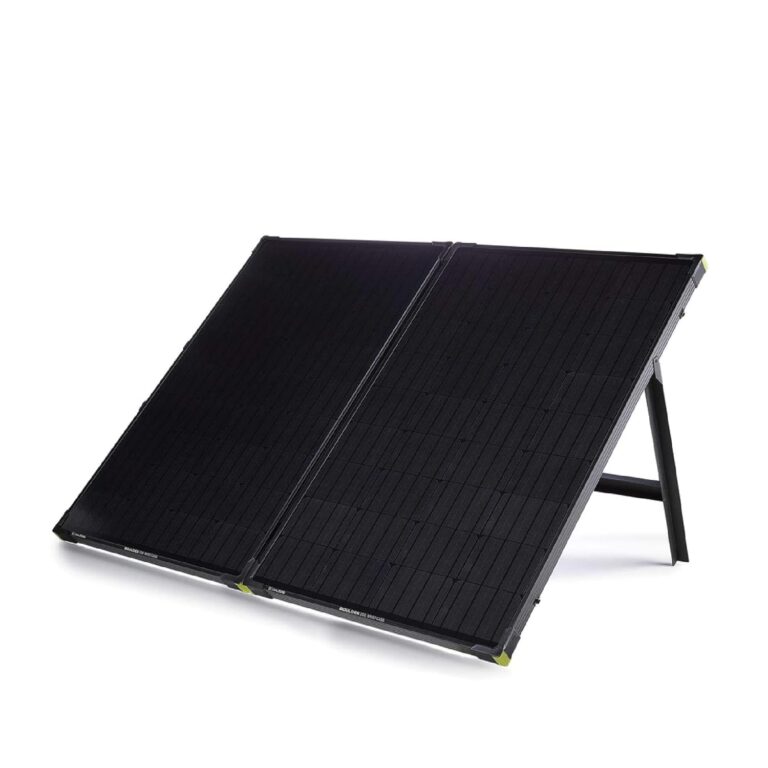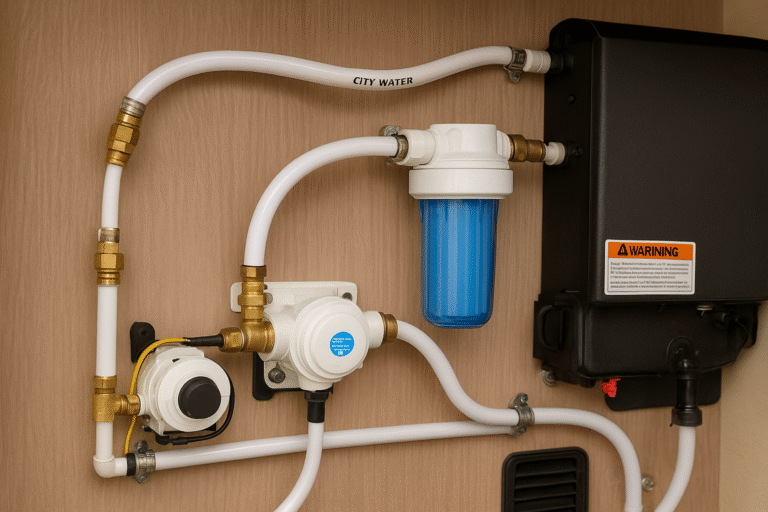Why Your RV Equipment Supplier Makes or Breaks Your Rental Business (And How I Learned This the Hard Way)
When I first entered the RV rental business three years ago, I made a costly mistake that taught me an invaluable lesson. I spent nearly $15,000 on equipment from various suppliers, only to discover that half of it was incompatible with my fleet, arrived damaged, or simply didn’t meet the quality standards my customers expected. That experience transformed how I approach RV listing equipment, and I’ve since helped dozens of fellow RV business owners avoid the same pitfalls.
The American RV market is booming. With the rental market valued at $2.72 billion in 2025 and projected to reach $3.62 billion by 2030, there’s never been a better time to invest in this industry. The average RV rental now costs $184 per night, and with over 65 million Americans planning RV vacations, the demand for well-equipped, properly outfitted recreational vehicles has never been higher.
But here’s the reality: your success in this competitive market hinges on one critical factor that many newcomers overlook—finding the right supplier for your RV listing equipment.
Understanding RV Listing Equipment: What You Actually Need
Before we dive into finding suppliers, let’s clarify what RV listing equipment really means. This isn’t just about the basics like leveling blocks and hoses. When you’re preparing an RV for rental or sale, you’re essentially creating a complete home-away-from-home experience that needs to function flawlessly from day one.
RV listing equipment encompasses everything from essential operational components to comfort amenities that differentiate your offering in a crowded marketplace. We’re talking about water filtration systems, electrical management tools, safety equipment, entertainment systems, kitchen supplies, bedding, climate control solutions, and outdoor accessories that enhance the camping experience.
The difference between a well-equipped RV and a basic one can mean the difference between five-star reviews and constant maintenance calls. I learned this the hard way when a renter’s vacation was ruined by a failed water pressure regulator—a $30 item that cost me $800 in refunds and a terrible review that took months to overcome.
Why Your Supplier Choice Matters More Than You Think
Here’s something most people don’t realize until they’re deep into the RV business: your supplier relationship is just as important as your vehicle selection. The right supplier becomes a partner in your success, while the wrong one becomes a constant source of frustration, delays, and financial drain.
Let me share a real example. Last summer, I needed to outfit five new Class C motorhomes for my expanding rental fleet. I had two options: continue with my existing supplier who offered decent prices but inconsistent availability, or switch to a specialized RV equipment provider that cost about 15% more upfront but promised comprehensive inventory and technical support.
I did the math carefully. The cheaper option would save me roughly $2,800 across all five units. But when I factored in previous experiences with shipping delays, incorrect items, and the time I spent sourcing missing pieces from multiple vendors, the expensive option actually saved me approximately $6,500 in total costs—not to mention three weeks of my time.
The True Cost of RV Listing Equipment: Beyond the Price Tag
When you’re evaluating suppliers and equipment costs, most people make the mistake of focusing solely on the sticker price. This narrow view can lead to decisions that seem financially sound initially but prove expensive in the long run.
Consider the total cost of ownership for RV listing equipment. This includes the purchase price, shipping costs, installation time, warranty coverage, replacement parts availability, technical support, and the opportunity cost of downtime when equipment fails.
A quality water heater might cost $450 from a premium supplier versus $280 from a discount retailer. But if the premium unit comes with a three-year warranty, 24/7 technical support, and next-day replacement parts, while the discount unit has a 90-day warranty and requires you to troubleshoot issues yourself, which is actually cheaper?
In the RV rental business where every day a unit sits idle costs you potential revenue—averaging $184 per night according to current market data—equipment reliability isn’t just a nice feature, it’s a financial necessity.
Step-by-Step Guide: Finding Your Ideal RV Equipment Supplier
Step 1: Define Your Specific Equipment Needs
Start by categorizing your equipment requirements into three tiers: essentials, enhancements, and luxuries. Essentials are non-negotiable items required for safe, legal operation—things like fire extinguishers, smoke detectors, proper electrical systems, and functional plumbing components. Enhancements are items that significantly improve the user experience and reduce your maintenance burden—quality mattresses, upgraded kitchen equipment, reliable climate control. Luxuries are differentiators that command premium rental rates—outdoor entertainment systems, premium bedding, high-end coffee makers.
For a typical 25-foot Class C motorhome in my fleet, the essential equipment investment runs about $3,200, enhancements add another $2,800, and luxury items can add $1,500 to $3,000 depending on your target market.
Create a detailed spreadsheet listing every item you need, including specifications, quantity, and priority level. This document becomes your reference point when evaluating suppliers and prevents you from making emotional purchases or forgetting critical items.
Step 2: Research and Identify Potential Suppliers
Not all RV equipment suppliers are created equal. Some specialize in aftermarket parts for older RVs, others focus on new construction components, and still others cater specifically to the rental and fleet market.
Start your search by identifying suppliers who understand the unique demands of RV rental or sales businesses. These suppliers recognize that you need equipment that’s durable, easily replaceable, and backed by solid warranties. They understand volume purchasing, seasonal demand fluctuations, and the importance of quick turnaround times.
Look for suppliers with comprehensive online catalogs, transparent pricing, detailed product specifications, and clear shipping policies. Red flags include vague product descriptions, no visible contact information, absence of customer reviews, and prices that seem too good to be true.
I maintain relationships with three primary suppliers and two backup options. This approach gives me negotiating leverage, ensures I’m never completely dependent on a single source, and provides alternatives when specific items are out of stock.
Step 3: Evaluate Quality Standards and Certifications
Quality control is where many RV equipment suppliers differentiate themselves. The challenge is that assessing quality before purchase requires some detective work.
Start by researching whether the supplier carries products that meet or exceed RV Industry Association standards. Look for equipment with proper certifications—electrical components should be UL listed, water systems should comply with NSF standards, and propane equipment needs CSA certification.
Request product samples or specifications sheets for critical items. A reputable supplier won’t hesitate to provide detailed information about their products’ origins, testing, and certifications. If a supplier becomes evasive when you ask about quality standards, that’s a clear warning sign.
I once saved myself from a disastrous purchase by insisting on seeing certification documentation for a batch of electrical converters. The supplier couldn’t provide proper UL listings, and I later discovered those same converters were recalled in two states for fire hazards. That due diligence prevented a potential catastrophe that could have destroyed my business.
Step 4: Compare Pricing Structures and Volume Discounts
Understanding pricing structures in the RV equipment industry requires looking beyond the displayed price. Many suppliers offer tiered pricing based on purchase volume, seasonal promotions, loyalty programs, and bundle deals that can significantly reduce your overall costs.
When comparing prices between suppliers, create a standardized comparison sheet. List identical items from each supplier including the base price, shipping costs, applicable discounts, and final delivered cost. This exercise often reveals that the “cheapest” supplier actually costs more once shipping and handling fees are added.
Volume purchasing deserves special attention. If you’re outfitting multiple RVs or planning to grow your fleet, negotiate volume discounts upfront. I typically save 12-18% on major purchases by committing to specific volume thresholds with my primary supplier.
Don’t overlook the value of package deals. Many suppliers offer pre-configured equipment packages for specific RV types and models. While these might seem limiting at first, they’re often priced 20-30% below buying items individually, and they ensure compatibility between components.
Step 5: Assess Shipping, Logistics, and Inventory Availability
In the RV business, timing is everything. A supplier with rock-bottom prices means nothing if they can’t deliver equipment when you need it. I’ve turned away from suppliers offering 25% discounts because their shipping times were unreliable and their inventory management was chaotic.
Evaluate each supplier’s shipping options, costs, and typical delivery timeframes. Do they offer expedited shipping? What are their policies on damaged goods? How do they handle backorders? These aren’t hypothetical concerns—they’re situations you’ll definitely encounter.
Inventory availability is equally critical. A supplier might have great prices on water pumps, but if they’re out of stock three times a year during peak season, they’re not a reliable partner. Ask potential suppliers about their inventory management systems, typical stock levels for items you frequently need, and how they handle sudden demand spikes.
One strategy I’ve found invaluable is working with suppliers who maintain significant inventory in multiple distribution centers. This regional distribution model means faster shipping times and lower freight costs—a supplier with warehouses in California, Texas, and Florida can serve most of the continental US with two-day ground shipping.
Step 6: Test Customer Service and Technical Support
Before committing to any supplier, test their customer service. Call their support line with a few technical questions. Email them about product specifications. See how quickly they respond and how knowledgeable their team is.
Quality technical support can save you thousands of dollars in trial-and-error installations and troubleshooting. When a water heater fails at 2 AM and you have renters calling in panic, you need a supplier who can walk you through diagnosis and emergency solutions over the phone.
I evaluate customer service by asking specific, moderately complex questions: “I’m installing a water filtration system in a 2018 Thor Challenger—which mounting brackets are compatible?” or “Can this inverter handle both my standard appliances and an added residential refrigerator?” The quality and speed of their response tells me everything I need to know.
The best suppliers I work with have dedicated account managers for fleet customers. This personalized service means someone actually knows my business, understands my typical orders, and can proactively alert me to new products or upcoming availability issues.
Step 7: Review Return Policies and Warranty Coverage
Equipment failures happen. Components arrive damaged. You occasionally order the wrong size or model. How a supplier handles these inevitable situations determines whether they’re a partner or a problem.
Carefully review return policies before making significant purchases. Look for suppliers offering at least 30-day returns on unopened items, reasonable restocking fees, and straightforward return processes. Some suppliers will even cover return shipping on defective items—a valuable benefit when you’re dealing with heavy equipment.
Warranty coverage is where suppliers really separate themselves. The standard manufacturer’s warranty is just the baseline. Progressive suppliers offer extended warranty options, hassle-free warranty claims processing, and sometimes even advance replacement programs where they ship your replacement before you return the defective item.
I learned the importance of this when a batch of LED lights failed after just three months. My supplier immediately shipped replacements at no charge and didn’t require return of the defective units. That saved me both money and downtime, and it cemented my loyalty to that supplier.
How the Right Supplier Saves You Money: Real Numbers
Let’s break down the actual cost savings from working with the right RV equipment supplier. These numbers are based on my experience managing a 12-unit RV rental fleet over three years.
Time Savings: Before optimizing my supplier relationships, I spent approximately 15 hours per month sourcing parts, comparing prices, and handling equipment issues. At a conservative value of $50 per hour, that’s $750 monthly or $9,000 annually. Working with reliable suppliers cut this to about 4 hours monthly—a savings of $6,600 per year.
Equipment Reliability: Quality equipment fails less often. My first year using budget suppliers, I averaged 3.5 equipment failures per vehicle annually, with an average repair cost of $380 including parts, labor, and rental refunds. That’s $15,960 across my fleet. After switching to quality-focused suppliers, failures dropped to 0.8 per vehicle annually, saving approximately $12,312 yearly.
Bulk Purchasing: Volume discounts and package deals save me roughly $4,200 annually compared to buying items individually at regular prices.
Reduced Shipping Costs: Consolidating purchases with fewer suppliers reduced my shipping expenses from an average of $340 per month to $145 per month—an annual savings of $2,340.
Warranty Savings: Better warranty coverage has saved me an estimated $3,800 annually in replacement costs that would otherwise come out of pocket.
Total Annual Savings: $29,252 across a 12-unit fleet, or approximately $2,438 per vehicle per year. These savings go straight to my bottom line and significantly improve my profit margins in a competitive market.
Common Mistakes to Avoid When Selecting RV Listing Equipment Suppliers
Through my experience and conversations with other RV business owners, I’ve identified several costly mistakes that are surprisingly common.
Prioritizing Price Above Everything Else: This is the number one mistake. That bargain supplier might save you 20% upfront, but cost you 40% more in the long run through poor quality, unreliable shipping, and inadequate support.
Failing to Verify Compatibility: Not all equipment fits all RVs. I once ordered $800 worth of window treatments that didn’t fit any of my units because I didn’t verify measurements properly. The supplier had a strict no-return policy on custom orders. Lesson learned.
Ignoring Reviews and References: In today’s connected world, there’s no excuse for not researching a supplier’s reputation. Check Google reviews, RV forums, and industry groups. If a supplier has consistently negative feedback about shipping or quality, believe it.
Not Testing Products Before Bulk Orders: Always order samples or small quantities of new products before committing to large orders. I test every new supplier and product with a small purchase first—it’s saved me from several potentially expensive mistakes.
Overlooking Lead Times: Peak season is exactly when you need equipment most, but it’s also when lead times stretch and inventory runs low. Plan your equipment purchases months in advance, not weeks.
Building Long-Term Supplier Relationships
The most successful RV rental and sales businesses don’t just have suppliers—they have partnerships. Here’s how to cultivate those valuable relationships.
Communicate your business plans and growth trajectory. If your supplier knows you’re planning to add five units next year, they can help you plan purchases, reserve inventory, and structure deals that benefit both parties.
Pay invoices promptly. This seems basic, but reliable payment builds trust and often leads to better terms, priority treatment during shortages, and advance notice of sales or new products.
Provide feedback, both positive and negative. Good suppliers want to improve their service and appreciate constructive feedback. When something goes right, let them know. When there’s an issue, communicate clearly and professionally.
Attend industry trade shows and events. These gatherings offer opportunities to meet supplier representatives face-to-face, see new products firsthand, and negotiate deals that aren’t available online.
The Future of RV Equipment Sourcing
The RV industry is evolving rapidly, and so is the equipment supply chain. Smart technology integration is becoming standard, with WiFi-enabled climate control, remote monitoring systems, and app-controlled appliances increasingly common in rental RVs.
Sustainability is another growing trend. More renters are asking about solar capabilities, eco-friendly materials, and energy-efficient systems. Suppliers who stay ahead of these trends offer competitive advantages to their customers.
The growth of the RV rental market—projected to reach $3.62 billion by 2030 with consistent 5-6% annual growth—means increased competition among suppliers. This competition benefits customers through better pricing, improved service, and more innovative product offerings.
Taking Action: Your Next Steps
If you’re preparing to enter the RV rental or sales market, or if you’re looking to optimize your existing equipment sourcing, start by taking these concrete steps this week.
First, audit your current equipment and identify items that need replacement or upgrade. Create that detailed spreadsheet I mentioned earlier, categorizing items by priority and estimating costs.
Second, reach out to at least three potential suppliers. Have real conversations. Ask the difficult questions about quality, support, and reliability. Request references from other fleet operators.
Third, start small with any new supplier. Place a test order before committing to large purchases. Evaluate their performance on shipping speed, product quality, communication, and problem resolution.
Fourth, join RV industry groups and forums where experienced operators share their supplier recommendations and warnings. The knowledge you’ll gain from these communities is invaluable.
Conclusion: Your Equipment Supplier Is Your Silent Business Partner
After three years in the RV rental business, I’ve come to understand that my equipment suppliers are as crucial to my success as my marketing strategy or customer service. The right suppliers provide more than just products—they provide expertise, reliability, support, and peace of mind.
The American RV market offers tremendous opportunities. With rental demand strong and growing, the potential for success is real. But that success depends on operational excellence, and operational excellence starts with having the right equipment from the right suppliers.
The time you invest in finding and cultivating relationships with quality RV equipment suppliers will pay dividends for years to come. Those savings in money, time, and stress compound over time, allowing you to focus on what really matters: providing exceptional experiences for your customers and growing your business.
Remember, in the RV business, you’re not just renting or selling vehicles—you’re enabling adventures, creating memories, and supporting dreams of exploration and freedom. Your equipment suppliers help make those dreams possible. Choose them wisely, treat them as partners, and watch your business thrive.
The road ahead is full of possibility. With the right equipment, the right suppliers, and the right approach, you’re positioned to succeed in one of America’s most exciting and growing industries.

